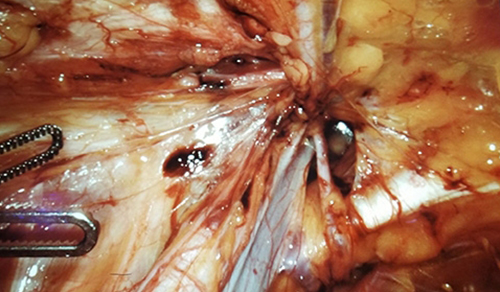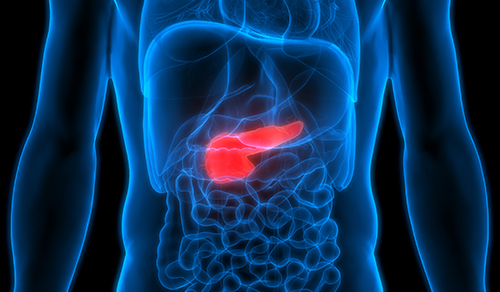Ankylosing Spondylitis: An Ongoing Diagnostic Challenge

Dr. Runsheng Wang
Norman Cousins and Ed Sullivan were among the more prominent individuals to have had ankylosing spondylitis (AS). Less famous was Leonard Trask, who is reported to be the first case of AS described in the United States in 1858, although accounts of AS by the Greek physician Galen date back as early as the second century. While AS has a long history, diagnosis in its early stages has remained elusive.
The delay in diagnosis is among the reasons that Runsheng Wang, MD, MHS, a rheumatologist in the Division of Rheumatology at NewYork-Presbyterian/Columbia University Irving Medical Center, developed a clinical and research interest in spondyloarthritis, with a particular focus on ankylosing spondylitis. Prior to joining Columbia, Dr. Wang was a Lawrence Shulman Scholar in Translational Research at the National Institute of Arthritis and Musculoskeletal and Skin Diseases (NIAMS), and she is a recipient of the Rheumatology Research Foundation Scientist Development Award.
“The main symptom of ankylosing spondylitis is inflammatory back pain caused by inflammation in the spine. It has many associated symptoms, such as peripheral arthritis, uveitis, and inflammatory bowel diseases,” says Dr. Wang. “The under-diagnosis of AS is partly due to under-recognition of its symptoms, resulting in a delay in referring patients to rheumatologists. But the delay is also due to the diagnostic method. We rely on the structural changes on pelvis X-rays to determine the diagnosis. However, it takes five to 10 years from symptom onset for the structural changes to become visible on pelvis radiographs, and by then the damage is already there. So how can we diagnose these patients earlier?”
To address this question, a new concept, axial spondyloarthritis, was proposed in 2009, and was intended to include the early phase of ankylosing spondylitis and ankylosing spondylitis itself. Developed by the Assessment of SpondyloArthritis International Society (ASAS), the classification criteria of axial spondyloarthritis includes patients who have classic presentation and radiographic findings of AS, and those who have symptoms of AS without structural changes on pelvis X-ray. The latter is called non-radiographic axial spondyloarthritis.
The ASAS criteria, however, raised several questions for Dr. Wang and others in the field. “Is non-radiographic axial spondyloarthritis truly a precursor stage of ankylosing spondylitis? Do all patients eventually evolve into the stage of ankylosing spondylitis? Will some patients stay in that stage and not progress? Or, in some patients, will their symptoms resolve over time?”
Some studies have examined similar questions in the past, but none provided sufficient answers due to duration of the studies. “Researchers examined these similar questions in prospective longitudinal studies,” says Dr. Wang. “However, because five to 10 years of follow-up is required to definitively determine the outcomes of these patients, previous studies had significant loss of follow-up during such long duration, particularly loss of patients with milder symptoms.”
A Novel Longitudinal Study
To address this challenge, Dr. Wang and her colleagues decided instead to conduct a retrospective population-based cohort study using a resource available through the Mayo Clinic called the Rochester Epidemiology Project, a medical linkage system with detailed medical records of the entire population of Olmstead County, Minnesota, including diagnostic and procedural codes since 1966.
“The diagnostic code for axial spondyloarthritis did not exist until the recent adoption of ICD-10. However, the Rochester Epidemiology Project includes detailed medical information of all Olmstead County residents and provides the opportunity to identify these patients based on their symptoms,” explains Dr. Wang. “In order to apply the ASAS classification criteria, we had to pin down the symptoms of each patient in combination with diagnostic and procedural codes for back pain, test results for HLA-B27, and MRIs of the pelvis.”
The researchers culled data on patients between 1985 and 2010 and, after screening 2,151 patients, they identified 83 subjects – 18 in the imaging arm, 65 in the clinical arm – with new-onset non-radiographic axial spondyloarthritis. They then followed these subjects from disease onset through March 15, 2015, using survival analysis to measure the time to progression to AS.
“We found that about one-third of patients with non-radiographic axial spondyloarthritis eventually progressed to ankylosing spondylitis,” adds Dr. Wang. “The next step was to stratify the risk for progression to AS in these patients.” The study found that subjects in the imaging arm were 3.5 times more likely to progress to AS than those in the clinical arm. In their paper, published in the June 2016 issue of Arthritis & Rheumatology, the researchers conclude, “This finding suggests an important difference among the entities included in the non-radiographic axial spondyloarthritis umbrella, one of which is much closer to ‘preradiographic’ AS, while the other represents a condition with a different prognosis.”
“There is a delay of five to 10 years in diagnosing ankylosing spondylitis from the onset of symptoms. How to timely and accurately diagnose these patients becomes one of the most important questions because we have highly effective drugs that can relieve symptoms of these patients. Understanding its natural history and identifying risk factors that predict disease progression will help us answer this question.” — Dr. Runsheng Wang
Building on their original research, Dr. Wang and her colleagues undertook a subsequent study to examine the long-term prognosis of patients with new-onset inflammatory back pain, the earliest and most common symptoms in patients with axial spondyloarthritis. They used the resources of the Rochester Epidemiology Project, examining the records of patients, 16 to 35 years old, with clinical visits for back pain from 1999 to 2003 to identify those with new-onset inflammatory back pain. Of the 5,304 patients screened, 124 were identified with this condition. The researchers followed these patients for a median of 13.2 years, examining their progression either to spondyloarthritis, a non-spondyloarthritis diagnosis, or resolution of back pain. “At 10 years, we found that the probability of having spondyloarthritis was 30 percent, while the probability of resolution of inflammatory back pain was 43 percent,” notes Dr. Wang. “The most important predictors for progression included uveitis, male sex, and family history of spondyloarthritis.”
Moving forward, Dr. Wang will collaborate with other investigators in North America to validate and improve the classification criteria of axial spondyloarthritis. Her long-term goal is to identify predictors for disease progression and to develop an effective treatment strategy to prevent structural damage and disease progression in these patients.
Reference Articles
Wang R, Crowson CS, Wright K, Ward MM. Clinical evolution of patients with new-onset inflammatory back pain: A population-based cohort study. Arthritis & Rheumatology. 2018 Feb 22. [Epub ahead of print]
Wang R, Gabriel SE, Ward MM. Progression of nonradiographic axial spondyloarthritis to ankylosing spondylitis: A population-based cohort study. Arthritis & Rheumatology. 2016 Jun;68(6):1415-21.
Related Publications








